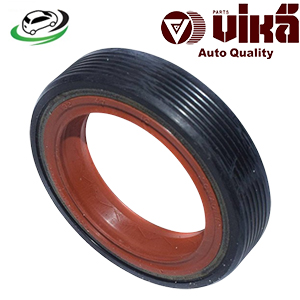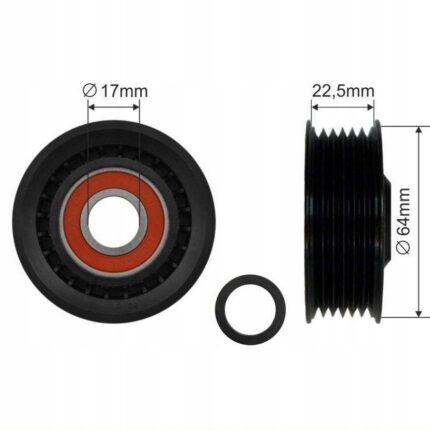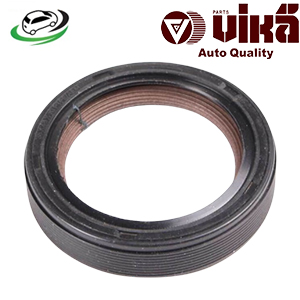-27%
Get Front CrankShaft Oil Seal AUDI A3 8P/B5 A4/B5 S4/B6 A4/B7 A4/C5 A6/TT MKI / VW Golf IV/V/Jetta IV/Jetta IV GLI/Passat B5/B6 038103085E
Camshaft and crankshaft seals are crucial components in an engine’s design, ensuring that oil remains where it’s supposed to and preventing leaks that could lead to significant engine damage. Both seals perform similar functions but are located in different parts of the engine and are tailored to their specific roles. This guide provides a thorough examination of camshaft and crankshaft seals, including their functions, types, common issues, maintenance, and replacement.
Function of Camshaft and Crankshaft Seals
Camshaft Seal
The camshaft seal is positioned at the end of the camshaft, which is responsible for opening and closing the engine’s valves. The primary functions of the camshaft seal include:
- Preventing Oil Leaks: The seal prevents engine oil from leaking out of the camshaft area, ensuring that the oil stays where it is needed to lubricate and cool the camshaft and associated components.
- Protecting the Engine: By keeping oil contained, the camshaft seal helps protect the engine from dirt and contaminants that could enter through leaks.
- Maintaining Pressure: The seal helps maintain proper oil pressure within the engine, contributing to optimal engine performance and longevity.
Crankshaft Seal
The crankshaft seal is located at the end of the crankshaft, which converts the linear motion of the pistons into rotational motion to drive the vehicle’s wheels. The primary functions of the crankshaft seal include:
- Preventing Oil Leaks: Similar to the camshaft seal, the crankshaft seal prevents oil from leaking out of the crankshaft area, maintaining proper oil levels and engine lubrication.
- Protecting the Engine: The seal helps keep contaminants out of the engine by sealing the area where the crankshaft exits the engine block.
- Maintaining Oil Pressure: The seal helps ensure that oil pressure remains consistent, which is crucial for proper engine operation and performance.
Types of Camshaft and Crankshaft Seals
Both camshaft and crankshaft seals come in various types, designed to fit different engine configurations and operating conditions:
- Rubber Seals:
- Description: Made from durable rubber materials, such as nitrile or silicone.
- Applications: Common in many modern engines due to their flexibility and effective sealing properties.
- Pros: Flexible, resistant to a range of temperatures and oils.
- Cons: Can degrade over time due to exposure to high temperatures and oil.
- Lip Seals:
- Description: Feature a sealing lip that makes contact with the rotating shaft.
- Applications: Used in both camshaft and crankshaft applications.
- Pros: Effective at preventing leaks and withstanding high pressures.
- Cons: The lip can wear out or become damaged over time.
- Metal Seals:
- Description: Incorporate a metal component along with a sealing element.
- Applications: Used in heavy-duty or high-performance engines.
- Pros: Highly durable and resistant to extreme conditions.
- Cons: Generally more expensive and less flexible than rubber seals.
- Composite Seals:
- Description: Made from a combination of materials, such as rubber and metal.
- Applications: Designed to offer enhanced performance and durability.
- Pros: Combine the advantages of different materials, such as flexibility and strength.
- Cons: Can be more complex and costly.
Importance of Camshaft and Crankshaft Seals
Camshaft and crankshaft seals are crucial for maintaining engine performance and longevity. Their importance includes:
- Leak Prevention: By preventing oil leaks, these seals help maintain proper lubrication and cooling of engine components.
- Engine Protection: They protect the engine from contaminants and dirt that could enter through leaks, reducing the risk of engine wear and damage.
- Maintaining Performance: Proper sealing ensures that oil pressure remains consistent, which is essential for optimal engine performance and fuel efficiency.
- Preventing Damage: Leaks can lead to low oil levels, which can cause severe engine damage and potentially result in costly repairs or engine failure.
Common Issues with Camshaft and Crankshaft Seals
Several issues can arise with camshaft and crankshaft seals, affecting their performance and the engine’s overall health:
- Wear and Tear: Over time, seals can wear out due to friction, temperature fluctuations, and exposure to oil. This can lead to leaks and reduced effectiveness.
- Cracking or Drying: Exposure to high temperatures and engine oil can cause rubber seals to crack or dry out, compromising their sealing ability.
- Leakage: If a seal becomes damaged or worn, it can cause oil to leak from the engine, leading to low oil levels and potential engine damage.
- Improper Installation: Incorrect installation of seals can lead to improper sealing, leaks, or damage to the engine components.
Signs of Faulty Camshaft and Crankshaft Seals
Identifying signs of faulty seals can help address issues before they lead to more severe problems:
- Oil Leaks: Visible oil leaks around the camshaft or crankshaft areas are a common sign of a faulty seal.
- Oil Spots: Finding oil spots or puddles under the vehicle can indicate a leak from one of the seals.
- Burning Oil Smell: A burning oil smell could suggest that oil is leaking onto hot engine components due to a faulty seal.
- Low Oil Levels: Consistently low oil levels may be a sign of a leak caused by a damaged or worn seal.
- Engine Noise: Unusual engine noises, such as knocking or ticking, could be related to oil leakage or insufficient lubrication.
Maintenance and Prevention
Proper maintenance and care can help extend the life of camshaft and crankshaft seals:
- Regular Inspections: Check the seals for signs of wear, damage, or leakage during routine maintenance.
- Monitor Oil Levels: Regularly check and maintain proper oil levels to ensure that the seals are functioning correctly.
- Replace Worn Seals: Replace seals that show signs of wear or damage promptly to prevent further issues and maintain engine performance.
- Proper Installation: Ensure that seals are installed correctly, following manufacturer specifications and guidelines to avoid damage and leaks.
Replacement of Camshaft and Crankshaft Seals
Replacing camshaft and crankshaft seals involves several steps, which can vary depending on the engine type and configuration:
- Preparation:
- Tools and Materials: Gather necessary tools, including seal pullers, gasket scraper, and replacement seals.
- Safety Measures: Ensure the engine is cool and the vehicle is securely supported.
- Remove the Old Seal:
- Locate the Seal: Identify the camshaft or crankshaft seal that needs replacement.
- Remove Components: In some cases, components such as the timing belt or pulley may need to be removed to access the seal.
- Remove the Seal: Use a seal puller or similar tool to carefully remove the old seal without damaging surrounding components.
- Install the New Seal:
- Prepare the Area: Clean the seal mounting area to remove any debris or old sealant.
- Install the Seal: Place the new seal into position and ensure it is seated evenly. Gently tap it into place using a seal installer tool if necessary.
- Reassemble Components:
- Reinstall Removed Parts: Put back any components that were removed to access the seal, such as the timing belt or pulley.
- Check for Leaks: After reassembly, check the area around the new seal for any signs of leaks.
- Test the Engine:
- Start the Engine: Start the engine and let it run for a few minutes, monitoring for any unusual noises or leaks around the new seal.
- Inspect: Check for proper oil levels and ensure there are no signs of leaks.
Follow us on Facebook for more parts.



